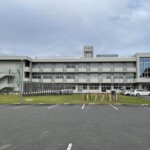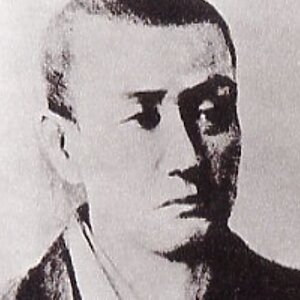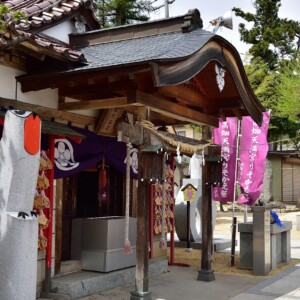
Hashino Iron Mining, a world heritage site in Kamaishi City, Iwate Prefecture, is one of the constituent assets that symbolized the industrial revolution of Japan in the Meiji era!
table of contents
- 1 World Heritage Site "Sites of Japan's Meiji Industrial Revolution: Iron and Steel, Shipbuilding and Coal Mining"
- 2 Kamaishi Mine, a mine discovered before the Hashino Iron Mine in Kamaishi City, Iwate Prefecture
- 3 The father of modern iron manufacturing, Nanbu feudal lord Oshima Takato
- 4 World Heritage Site Hashino Iron Mine (Hashino Blast Furnace Ruins)
- 5 Hashino Iron Mine Information Center
The Hashino Iron Mine and Hashino Blast Furnace Ruins are blast furnace ruins located in Hashino-cho, Kamaishi City, Iwate Prefecture. They were designated a national historic site in 1957 and are one of the constituent assets of the World Heritage Site "Sites of Japan's Meiji Industrial Revolution: Iron and Steel, Shipbuilding and Coal Mining."
The registered name is "Hashino Iron Mine .
World Heritage Site "Sites of Japan's Meiji Industrial Revolution: Iron and Steel, Shipbuilding and Coal Mining"
The World Heritage Site "Sites of Japan's Meiji Industrial Revolution: Iron and Steel, Shipbuilding and Coal Mining" 23 components spread across 8 prefectures and 11 cities . The following is a simplified version of the components nationwide, divided into areas.
- Area 1 - Hagi City, Yamaguchi Prefecture
- Hagi Reverberatory Furnace, Ebisugahana Shipyard Ruins, Oitayama Tatara Ironworks Ruins, Hagi Castle Town, Shokasonjuku
- Area 2 - Kagoshima Prefecture Area
- Former Shuseikan Museum, Terayama charcoal kiln site, Sekiyoshi canal
- Area 3 - Shizuoka Prefecture Area
- Nirayama Reverberatory Furnace
- Area 4 - Kamaishi area, Iwate Prefecture
- Hashino Iron Mine
- Area 5 - Saga Prefecture Area
- Mietsu Naval Dock Ruins
- Area 6 - Nagasaki Prefecture Area
- Former Kosuge Ship Repair Dock, Mitsubishi Nagasaki Shipyard No. 3 Dock, Mitsubishi Nagasaki Shipyard Giant Cantilever Crane, Mitsubishi Nagasaki Shipyard Former Wooden Pattern Shop, Mitsubishi Nagasaki Shipyard Senshokaku, Takashima Coal Mine, Hashima Coal Mine, Former Glover House
- Area 7 - Fukuoka Prefecture, Omuta City, Kumamoto Prefecture, Arao City, Kumamoto Prefecture, Uki City area
- Miike Coal Mine, Miike Port, Misumi West Port
- Area 8 - Kitakyushu City and Nakama City area, Fukuoka Prefecture
- Government-run Yawata Steel Works, Onga River Source Pumping Station
Within the list above, the periods can be divided into two: the early development period and the industrial formation period
Component parts in the early development period
Iron and steel
Hagi (Hagi reverberatory furnace, Oitayama Tatara ironworks ruins, etc.), Kagoshima (Shuseikan), Nirayama (Nirayama reverberatory furnace), Kamaishi (Hashino iron mine and blast furnace ruins)
shipbuilding
Hagi (Ebisugahana Shipyard site, etc.), Saga (Mietsu Naval Dock site), Kagoshima (Shuseikan), Nagasaki (Kosuge Ship Repair Dock, etc.)
Coal Industry
Nagasaki (Takashima Coal Mine, Hashima Coal Mine, etc.), Miike (Misumi West (old) Port)
Component parts from the industrial formation period
Iron and steel
Yawata (Yawata Steel Works)
shipbuilding
Nagasaki (Nagasaki Shipyard)
Coal Industry
Miike (Miike Coal Mine, Miike Port)
Although it is rare worldwide, there is a reason why Japan's Industrial Revolution became a World Heritage Site. The following is a quote from the World Heritage Center's official website, but from the world's perspective, it was as follows
This book tells the story of how feudal Japan sought to transfer technology from Europe and the United States, and then improved the imported technologies to suit domestic needs and traditions, quickly becoming one of the world's leading industrial nations. The collection of technologies in the key industries of iron and steel, shipbuilding, and coal mining demonstrates Japan's remarkable achievement as the first non-Western nation to successfully become an industrial nation, a remarkable achievement in world history
© UNESCO World Heritage Center 1992-2024
Above we have given a brief explanation of the constituent assets of the World Heritage Site "Sites of Japan's Meiji Industrial Revolution: Iron and Steel, Shipbuilding and Coal Mining." Among these assets, the Hashino Iron Mine, located in Hashino-cho, Kamaishi City, Iwate Prefecture, played an especially important role in Japan's industrial revolution
This is possible because of the nature of the Tohoku region, Iwate Prefecture, and Kamaishi City
Kamaishi Mine, a mine discovered before the Hashino Iron Mine in Kamaishi City, Iwate Prefecture
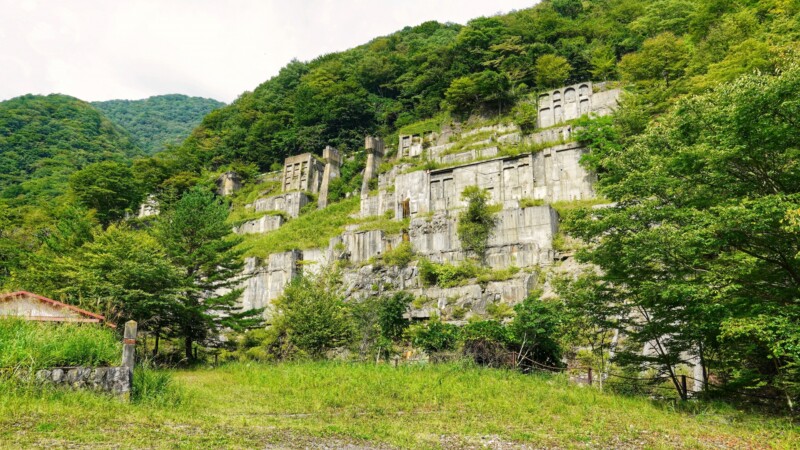
Why did we choose Kamaishi City, Iwate Prefecture? It wasn't because the sea stretched out before us, or because it just so happened to be in Iwate. It was because this area was home to Japan's largest iron mine, the Kamaishi Mine, an iron deposit formed by the reaction (contact alternation) of magma, which became granite, with the surrounding limestone.
Kamaishi Mine is located on the coast of the Kitakami Mountains, and is said to have a history of over 150 years since it was first opened in the Meiji era. In 1727, Abe Shoo a medicinal herb collector for the Edo Shogunate (a person who traveled around the country to collect and study medicinal herbs) , discovered magnetite (a type of iron oxide mineral) at Sennin Pass. In addition to the main mineral iron, gold, silver, copper, lead, and zinc were also produced, and even now, after the mine has closed, about 100 tons are still extracted annually for research purposes.
Abe Masao magnetite at Sennin Pass , in 1849 Takasu Seibei and Nakano Daisuke jointly built an old-style blast furnace in Ohashi.
Then in 1857, Oshima Takato , a samurai of the Nanbu domain, succeeded in tapping pig iron (the process of removing molten pig iron that has accumulated in a blast furnace) using a blast at the Hashino Iron Mine, and in 1862, two more blast furnaces were added, increasing pig iron production.
The father of modern iron manufacturing, Nanbu feudal lord Oshima Takato

As the city transitions from Japan's largest iron mine to its number one steel town, we must not forget the man who is indispensable for discussing steelmaking: Takato Oshima, the "father of modern steelmaking .
Born into a doctor's family in Morioka, he studied Dutch studies
Oshima Takato was born on May 11, 1826, in Niokoji, Morioka, as the eldest son of Oshima Shui, a physician to the Morioka domain. In 1842, at the age of 17, he traveled to Tokyo to study Western medicine, where he studied under Mitsukuri Genpo and Tsuboi Shindo
He became interested in modern weapons in Nagasaki and translated a Dutch book on iron reverberatory furnaces
He then studied in Nagasaki, where he became interested in Western military science, artillery, mining, and refining, and together with Choshu samurai Tezuka Ritsuzo translated Major General Huguenin's "Casting Methods at the Royal Iron Cannon Foundry of Loic," which
Invited by the Mito domain, he succeeded in building an iron reverberatory furnace
Later, he was invited by the Mito domain and succeeded in building a reverberatory furnace in Nakaminato and casting cannons, but the performance was not high because the raw material was iron sand. After that, in order to produce high-quality iron, he built a Koshimura Ohashi (now Koshicho Ohashi, Kamaishi City, Iwate Prefecture) and as mentioned above, in 1857 he became the first in Japan to successfully operate a pig iron production plant by refining iron ore.
Why is Oshima Takato called the "father of modern steelmaking"
World Heritage Site Hashino Iron Mine (Hashino Blast Furnace Ruins)

The World Heritage Site "Hashino Iron Mine (Hashino Blast Furnace Ruins)" is located in Hashino-cho, Kamaishi City, Iwate Prefecture
It was designated a national historic site in 1957, received the Historic Heritage Award (HL Award) from the American Institute for Metals in 1984, and was included in the World Heritage Site "Sites of Japan's Meiji Industrial Revolution: Iron and Steel, Shipbuilding and Coal Mining" in 2015. The registered name of the World Heritage site is "Hashino Iron Mine," which collectively refers to the remains of the iron ore mine, transportation route, and blast furnace
At the very back of the Hashino blast furnace ruins there is a gate to the iron mine, and although the road continues as a forked forest road, it is off-limits as it is national forest beyond that point
Hashino Blast Furnace Ruins

The Hashino Blast Furnace Site is the oldest surviving blast furnace site in Japan. On December 1, 1858, Oshima Takato constructed a Western-style blast furnace in Ohashi (near the current site of the former mine office) using Dutch books as reference, and succeeded in continuously producing iron. The following year, in 1858, operations began with a temporary blast furnace (now the No. 3 blast furnace), marking the beginning of the Hashino Iron Mine
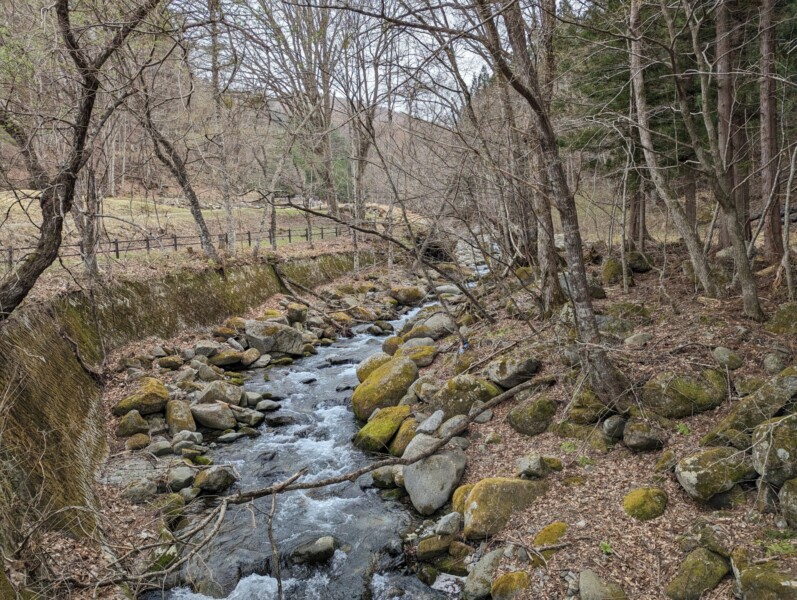
The reason why blast furnaces were built deep in the mountains of Hashino-cho, Kamaishi City, was not simply because high-quality magnetite could be extracted there
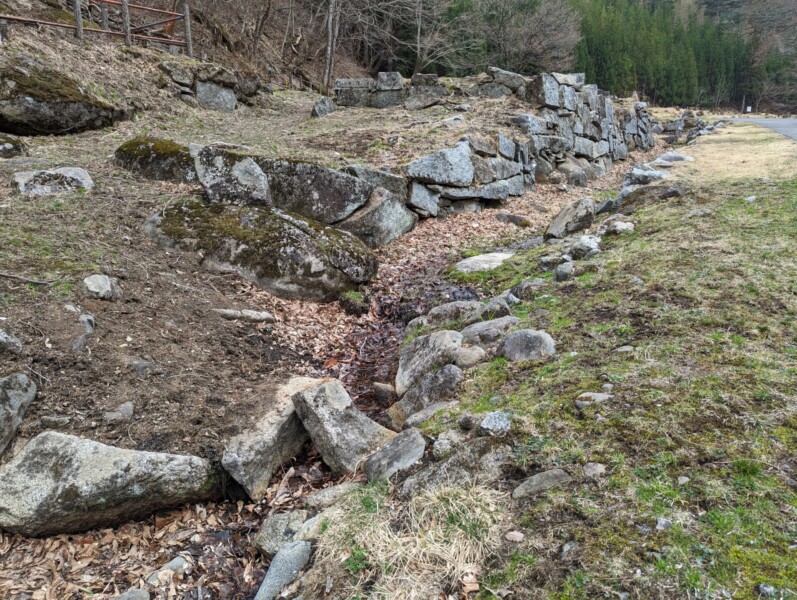
In addition to iron, the mountain was also able to mass-produce high-quality charcoal, which is essential for steel production, and the small streams that flowed through it allowed waterways to be built, and hydroelectric bellows (devices that send air to burn fuels such as charcoal at high temperatures) were able to send enough air to the blast furnaces to produce iron, which was a major factor

As you walk around the site, slag, . There are various sizes, from pebbles to large pieces over 60cm in diameter.

This is a dissolved substance other than the target components that is generated when refining minerals such as iron, nickel, and chromium, and is considered a type of industrial waste. In other words, this slag is proof that the Hashino blast furnace was in operation at the time. As an aside, I personally found this slag more romantic than the remains of the blast furnace

When Hashino Blast Furnace was in operation, it employed around 1,000 workers, and in addition to the three huge blast furnaces, there were also tenement houses where the employees slept, a blacksmith's house, a watermill, a place where salaries were paid, and a shrine

At the current Hashino Blast Furnace site, you can see the stone walls of the three blast furnaces. Castle-style stone wall construction was used to build the blast furnaces' stonework, and Japanese wooden structures were used to cover the furnaces. Documents show that they were about 10 meters high. They were built by Oshima Takato using Japanese technology in order to produce steel that could compete with the world
By the way, there are three blast furnaces at Hashino, numbered one through three, with the first to be built being the third blast furnace, and these numbers are counted from upstream
Hashino Iron Mine Information Center

The Hashino Iron Mine is home to the Hashino Iron Mine Information Center, which was built in 2014. We recommend that you gain some prior knowledge at this information center before entering the Hashino Blast Furnace Ruins
The guides are also friendly locals who will welcome you with kindness and care
Hashino Iron Mine <Information>
- Name: Hashino Iron Mine Information Center
- Address: 2-6 Hashinocho, Kamaishi City, Iwate Prefecture, 026-0411
- Opening hours: 9:30am - 4:30pm
- Closed: December 9th to March 31st
- Usage fee: Free
- access
- Approximately 50 minutes by car from JR Kamaishi Station (taxis and rental car shops available near Kamaishi Station)
- Approximately 35 minutes by car from JR Tono Station (taxis available near Tono Station)
- Large buses cannot pass through the Kamaishi-Tono Prefectural Road
- The nearest bus stop is Nakamura, but it is difficult to take a taxi from there. In that case, please note that you will have to walk about 10km one way along prefectural and city roads



![The legend of the golden buried gold of the Fujiwara clan of Oshu! What is Mt. Kinji in Hiraizumi? [Iwate Prefecture] Gold block](https://jp.neft.asia/wp-content/uploads/2017/08/3202420_m-150x150.jpg)
![Is the Japanese stone circle "Oyu Ring Stone" a sacred place in the Jomon period? [Akita Prefecture] 03 Large-Tuna-Arrow Stone](https://jp.neft.asia/wp-content/uploads/2024/02/bb0e520018fd2a51e736190b0b46ab5e-150x150.jpg)
![Mokoshiji Temple, the world heritage site with Japan's oldest garden, the Jodo Garden [Iwate Prefecture] Motsuji Temple (entrance)](https://jp.neft.asia/wp-content/uploads/2016/10/IMG_3844-150x150.jpg)
![[JR East Pass Trip: Day 2 Part 2] Intensive exploration of Hiraizumi! World Heritage Sites: Chusonji Temple and Kinjido Chusonji Temple Information Board](https://jp.neft.asia/wp-content/uploads/2022/12/IMG_3829-1200x675-1-150x150.jpg)
![[Akita Prefecture] Kosaka Town is a town that has taken you back in time to the Meiji era. Cultural heritage left behind by Kosaka Mine 1_22](https://jp.neft.asia/wp-content/uploads/2023/07/1_22-150x150.jpg)
!["Isedodai Ruins" is a mysterious ruin registered as a World Heritage Site! [Akita Prefecture] Model of Isedotai ruins (Isedotai Jomonkan)](https://jp.neft.asia/wp-content/uploads/2024/04/deb17445343a914a827ad485a5591592-150x150.jpg)
